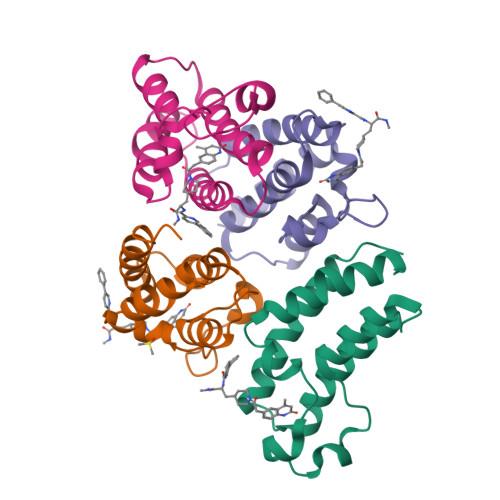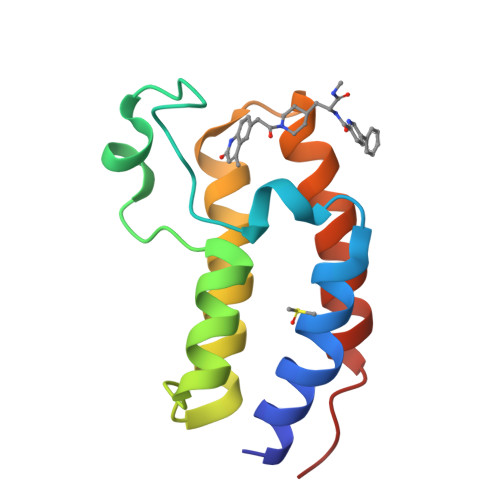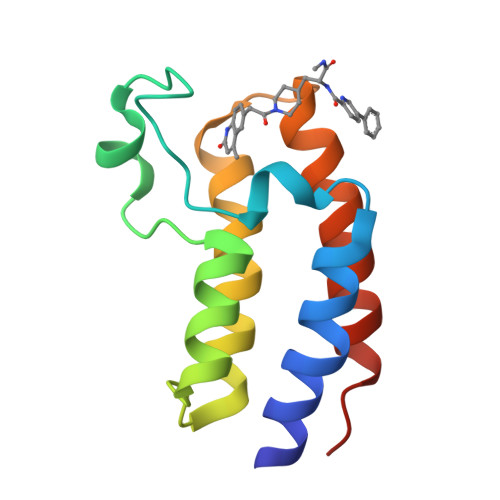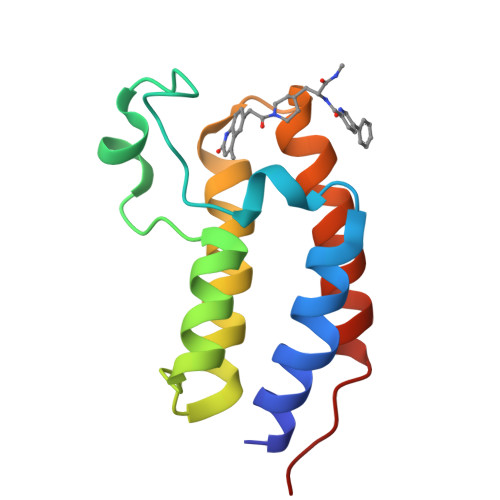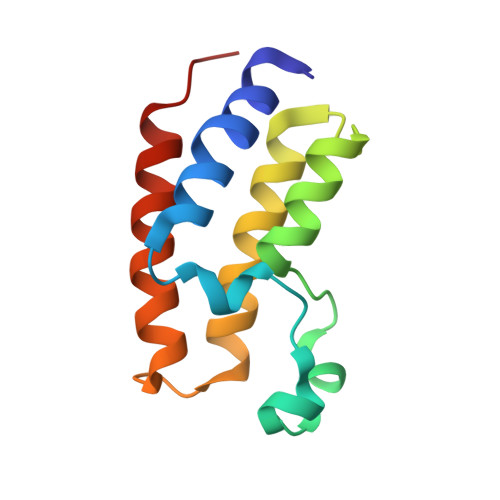Discovery of potent BET bromodomain 1 stereoselective inhibitors using DNA-encoded chemical library selections.
Modukuri, R.K., Yu, Z., Tan, Z., Ta, H.M., Ucisik, M.N., Jin, Z., Anglin, J.L., Sharma, K.L., Nyshadham, P., Li, F., Riehle, K., Faver, J.C., Duong, K., Nagarajan, S., Simmons, N., Palmer, S.S., Teng, M., Young, D.W., Yi, J.S., Kim, C., Matzuk, M.M.(2022) Proc Natl Acad Sci U S A 119: e2122506119-e2122506119
- PubMed: 35622893
- DOI: https://doi.org/10.1073/pnas.2122506119
- Primary Citation of Related Structures:
7UBO - PubMed Abstract:
BRDT, BRD2, BRD3, and BRD4 comprise the bromodomain and extraterminal (BET) subfamily which contain two similar tandem bromodomains (BD1 and BD2). Selective BD1 inhibition phenocopies effects of tandem BET BD inhibition both in cancer models and, as we and others have reported of BRDT, in the testes. To find novel BET BD1 binders, we screened >4.5 billion molecules from our DNA-encoded chemical libraries with BRDT-BD1 or BRDT-BD2 proteins in parallel. A compound series enriched only by BRDT-BD1 was resynthesized off-DNA, uncovering a potent chiral compound, CDD-724, with >2,000-fold selectivity for inhibiting BRDT-BD1 over BRDT-BD2. CDD-724 stereoisomers exhibited remarkable differences in inhibiting BRDT-BD1, with the R-enantiomer (CDD-787) being 50-fold more potent than the S-enantiomer (CDD-786). From structure–activity relationship studies, we produced CDD-956, which maintained picomolar BET BD1 binding potency and high selectivity over BET BD2 proteins and had improved stability in human liver microsomes over CDD-787. BROMOscan profiling confirmed the excellent pan-BET BD1 affinity and selectivity of CDD-787 and CDD-956 on BD1 versus BD2 and all other BD-containing proteins. A cocrystal structure of BRDT-BD1 bound with CDD-956 was determined at 1.82 Å and revealed BRDT-BD1–specific contacts with the αZ and αC helices that explain the high affinity and selectivity for BET BD1 versus BD2. CDD-787 and CDD-956 maintain cellular BD1-selectivity in NanoBRET assays and show potent antileukemic activity in acute myeloid leukemia cell lines. These BET BD1-specific and highly potent compounds are structurally unique and provide insight into the importance of chirality to achieve BET specificity.
Organizational Affiliation:
Center for Drug Discovery, Department of Pathology & Immunology, Baylor College of Medicine, Houston, TX 77030.








